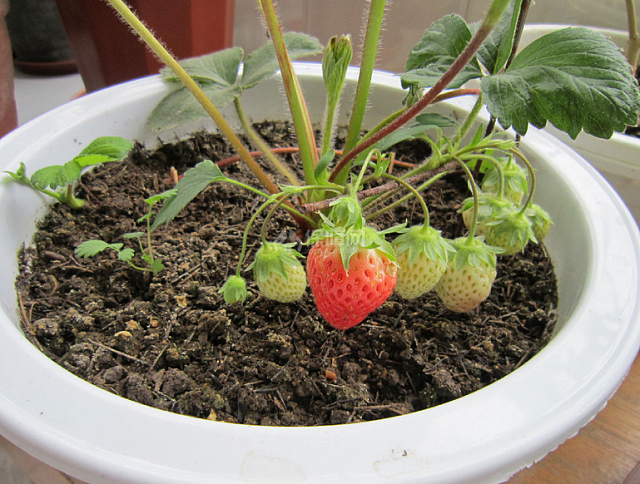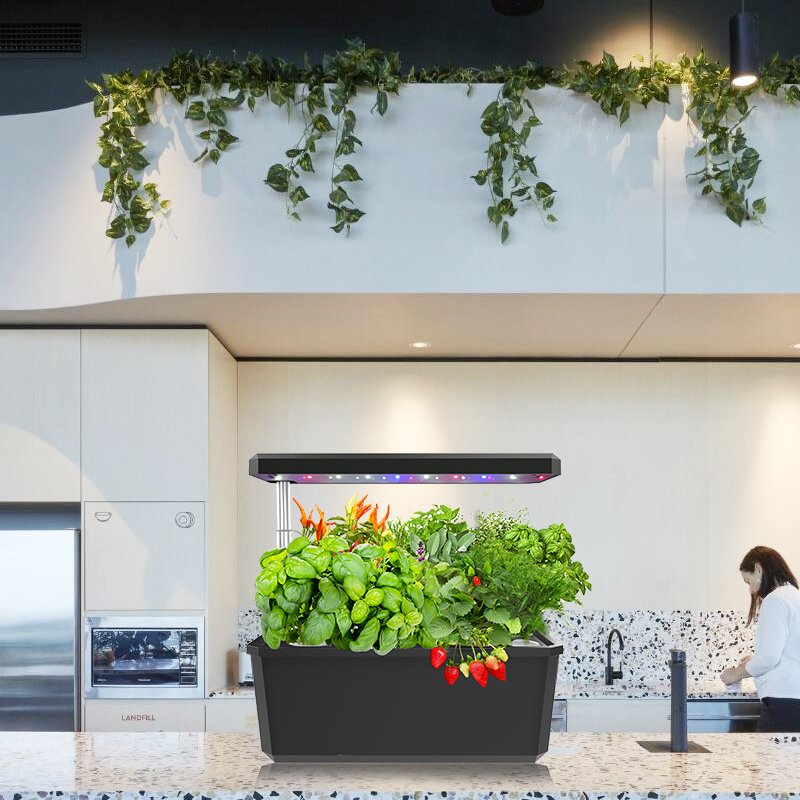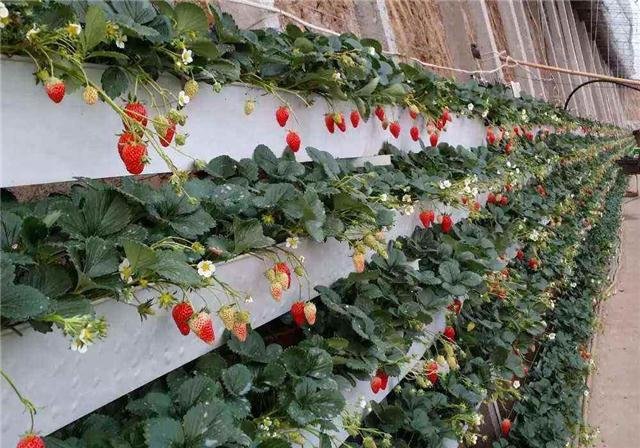Menu
What is the Best Way to Grow Strawberries?
Imagine plump and juicy strawberries ripening in your courtyard or on your countertop, emitting a rich, sweet aroma. But what if you don’t have a vast garden?
No problem! Thanks to the magical and versatile cultivation methods, the dream of growing strawberries can still come true, even in limited space.
Break free from the constraints of traditional soil and explore the exciting worlds of substrate cultivation and hydroponics. Strawberries can thrive not only in soil but also in innovative mediums like coconut coir and nutrient-rich water.
Let’s delve into three primary cultivation methods for strawberries: soil, substrate, and hydroponics.
Table of Contents
Soil Cultivation
Soil cultivation is the most common and stable method for cultivating strawberries.
● Prepare the Soil:
Choose loose, fertile, and well-draining soil. A mix of leaf mold, garden soil, and fine sand is often used for preparation.
● Planting:
Insert strawberry seeds or runners into the soil, ensuring that the roots are not buried too deep.
● Maintenance:
Strawberries prefer moisture, so it’s essential to keep the soil consistently moist. Additionally, provide adequate light and ventilation.
● Fertilization:
During the growing season, regularly apply balanced compound fertilizer containing nitrogen, phosphorus, and potassium.
Pros.
Soil cultivation has stable growth, high fruit quality, and ease of management.
Cons.
Pests and diseases spread easily and require regular pesticide spraying.

Hydroponic Cultivation
Hydroponic strawberries represent an emerging cultivation method where the roots of the strawberries grow submerged in a nutrient solution.
● Select a Container:
Choose a suitable container such as a plastic box or glass container. The size of the container can be selected based on your needs.
● Prepare the Nutrient Solution:
Prepare a nutrient solution tailored to the growth requirements of strawberries. Generally, you can use either natural or chemically synthesized nutrient solutions.
● Planting and Maintenance:
Immerse strawberry seeds or runners in the nutrient solution, maintaining suitable temperature and light conditions. Regularly replace the nutrient solution, and ensure air humidity is kept between 70% to 80%.
The advantages of hydroponic strawberries include soil-free cultivation, easy management, and a reduced risk of diseases and pests.
Pros.
Hydroponic strawberries include soil-free cultivation, easy management, and a reduced risk of diseases and pests.
Cons.
Potentially lower fruit quality compared to soil cultivation, and it demands higher environmental control.

Substrate Cultivation
Substrate cultivation is a method that falls between soil and hydroponic cultivation, where the roots of strawberries are anchored and grown on a substrate.
● Select a Substrate:
Choose an appropriate substrate such as perlite, vermiculite, peat moss, etc., and mix them according to requirements.
● Prepare the Container:
Select a suitable container, such as plastic pots or flowerpots, with the size chosen based on your needs.
● Planting and Maintenance:
Fix strawberry seeds or runners in the substrate, maintaining suitable temperature and light conditions. Water and fertilize regularly. Keep the air humidity between 70% to 80%.
Pros.
It is more environmentally friendly and easier to manage than soil cultivation, and more stable and easier to propagate than hydroponics.
Cons.
Relatively higher costs and higher requirements for substrate aeration and drainage.

The Optimal Way to Grow Strawberries
There is no single best way, only the most suitable method based on your preferences.
Nature Enthusiast:
Embrace the classic satisfaction of traditional soil cultivation. Be prepared for more work, potential pests, and limited space options.
Convenience Seeker:
Opt for the substrate revolution! These lightweight, clean mixed substrates are easy to manage, yield high production, and are perfect for balconies and courtyards.
Tech Enthusiast:
Enjoy the advantages of rapid growth and minimal mess, but be ready for the initial investment and a deeper understanding of plant knowledge.
Choose your strawberry adventure based on what interests you the most and revel in the joy of cultivating your own sweet and juicy treasures.
How Do You Give Plants Light Without Sunlight?
Regardless of the cultivation method chosen, suitable light intensity is essential to enhance the yield and quality of strawberries.
When natural light is insufficient on cloudy or rainy days, the use of LED plant lights can provide continuous illumination to compensate for the lack of sunlight. LED plant lights are ideal for indoor strawberry cultivation due to their low power consumption, long lifespan, and low heat emission.
Choosing the right LED plant lights involves considering factors such as the number of LEDs, power, color, and spectrum distribution.
Generally, a single strip-shaped LED light fixture is sufficient for strawberries, but if a larger area needs coverage, increasing the number of LEDs may be considered.
For power, it is recommended to select lights in the range of 30W to 40W to ensure adequate illumination. Regarding color and spectrum distribution, a combination of red and blue-green LEDs is commonly chosen to provide the various light energies required by plants.
When installing LED plant lights, ensure they are at an appropriate distance from the strawberries to avoid overheating or insufficient light. Generally, maintaining a distance of 10-20 centimeters between the light and the plants is advisable. If the lights need to be on for extended periods, additional cooling measures may be necessary.
If abnormal plant growth is observed, adjustments to the position or power of the LED lights may be needed. Additionally, regular cleaning of the fixtures is essential to ensure their proper functioning.
Usage Time of LED Plant Lights in Different Growth Stages of Strawberries
The usage time of LED plant lights is related to the different growth stages of strawberries, which include the germination stage, vegetative growth stage, flowering stage, and fruiting stage.
Germination Stage:
Lighting Duration: 24 hours.
During the germination stage of strawberries, continuous lighting aids in promoting seed germination and the growth of seedlings.
Vegetative Growth Stage:
Lighting Duration: 16-18 hours.
Dark Period: 6-8 hours.
In the vegetative growth stage, strawberries require sufficient light to support the growth and development of leaves. Providing 16-18 hours of light helps the plant efficiently utilize light energy for photosynthesis.
Flowering Stage:
Lighting Duration: 12-14 hours.
Dark Period: 10-12 hours.
As strawberries enter the flowering stage, reducing the lighting time helps simulate natural conditions and stimulates the formation of flowers.
Fruiting Stage:
Lighting Duration: 12 hours.
Dark Period: 12 hours.
During the fruiting stage, strawberries need stable lighting to promote the growth and development of fruits.
Get in touch with us!
From custom light planning, to tailored quotes, and everything in between, our team of horticulture experts are always ready to assist.




